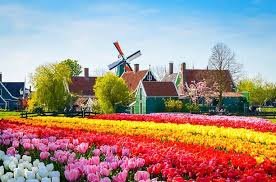Throughout history, trade routes have been essential for the exchange of goods, ideas, and cultures. These routes facilitated connections between distant civilizations, and along the way, cities and palaces grew as centers of commerce, culture, and political power. In ancient China, the most significant of these trade routes was the Silk Road, which stretched from the heart of China through Central Asia, and into Europe and the Middle East. In addition to the bustling marketplaces and thriving cities, the Silk Road also saw the rise of grand palaces built by ruling dynasties, serving not only as royal residences but also as symbols of wealth, power, and influence in an ever-changing world.
In this article, we will explore how ancient trade routes, especially those like the Silk Road, influenced the construction of palaces in different regions of China. These palaces were often situated along key commercial arteries and became focal points for cultural exchange, military strategy, and governance. We will examine how these palaces reflected the political and economic importance of trade, their architectural features, and their lasting legacy in history.
1. The Role of Ancient Trade Routes in Shaping Palaces
Ancient trade routes were more than just paths for transporting goods. They were also avenues for cultural and political exchange, bringing together peoples from different backgrounds, religions, and customs. The cities and regions along these routes became crucial meeting points where the power of empires and kingdoms could be centralized. To solidify their authority, rulers often constructed impressive palaces that symbolized their dominance and ability to manage such a complex, far-reaching network of trade and commerce.
For many of China’s ancient dynasties, such as the Han, Tang, and Yuan, palaces were not only royal residences but also administrative centers and symbols of their expansive reach across trade routes. These palaces were often located in cities that were situated at the crossroads of major trade routes, which gave them significant strategic importance. The wealth and influence generated by trade in these cities helped fund the construction of lavish and monumental palaces, whose architecture would reflect the cultural fusion and sophistication of the time.
2. The Silk Road and the Rise of Palaces in Central China
The Silk Road, the most famous of the ancient trade routes, connected the eastern part of China with Central Asia, the Middle East, and Europe. It became the primary conduit for trade in silk, spices, tea, and other goods that were highly valued across the ancient world. Along the route, a number of cities flourished, and many of these became the site of magnificent palaces. In particular, during the Tang Dynasty (618-907 AD), the cities along the Silk Road experienced rapid growth, and the construction of palaces became an important feature of the political and cultural landscape.
Chang’an: The Imperial City of the Tang Dynasty
Chang’an (modern-day Xi’an) was the capital of the Tang Dynasty and one of the most important cities on the Silk Road. As a bustling metropolis at the heart of one of the most prosperous empires in Chinese history, Chang’an was home to a series of grand palaces. The Tang imperial palace, known as the Taiji Palace, was an architectural marvel that symbolized the grandeur of the dynasty. It was strategically located along the trade route, allowing the emperor and his court to control the flow of goods and people coming into and out of the empire.
The Taiji Palace was a vast complex, featuring numerous halls, gardens, and courtyards. Its design followed traditional Chinese principles of harmony and symmetry, but it also incorporated influences from Central Asia and other regions along the Silk Road. This fusion of architectural styles reflected the cosmopolitan nature of Tang China, as the empire was a melting pot of various cultures due to the long-distance trade that passed through Chang’an. The palace was not just a residence for the emperor but also a center for political activity, diplomatic meetings, and cultural exchanges with foreign envoys, many of whom had traveled along the Silk Road.
Dunhuang: A Cultural and Religious Center
Dunhuang, another important city along the northern Silk Road, was a strategic oasis and a key stop for merchants, pilgrims, and travelers. The city became famous for its Buddhist art and culture, with the Dunhuang Caves serving as a repository of ancient murals and sculptures. While not known for a large, imperial-style palace, Dunhuang’s significance in the broader Silk Road network helped it flourish as a cultural and religious center. The palaces and temples in Dunhuang, though more modest in scale compared to those in Chang’an, were important symbols of the city’s power and influence over trade and religion.
Dunhuang’s proximity to both the Silk Road and the Hexi Corridor made it a crossroads of cultural exchange, particularly for Buddhist influence, which spread from India through Central Asia. As a result, Dunhuang’s palatial structures reflected the fusion of Chinese, Indian, and Central Asian styles, showcasing how the Silk Road shaped the architecture and culture of cities and regions across China.
3. The Southern Silk Road and the Palaces of Yunnan
While the northern Silk Road is the most famous trade route connecting China to the West, the southern Silk Road also played a significant role in facilitating trade between China, Southeast Asia, and South Asia. The southern route passed through regions such as Yunnan and Sichuan, which became key areas for the exchange of goods like spices, tea, and silk. The palaces built in these regions were influenced not only by Chinese architectural styles but also by the cultural practices of the neighboring Southeast Asian kingdoms.
Dali: The Palace of the Nanzhao Kingdom
The Nanzhao Kingdom, which ruled over Yunnan from the 8th to the 10th century, is an example of a regime that established its power in a region that was part of the southern Silk Road network. Dali, the capital of Nanzhao, was strategically located at the crossroads of trade routes linking China to Southeast Asia and Tibet. The Nanzhao royal palace in Dali was a grand structure that embodied the wealth and power of the kingdom. Though much of it is now in ruins, the remnants of the palace complex give insight into how the influence of the southern Silk Road affected the architecture of the region.
The palace in Dali was an imposing structure, blending traditional Chinese architectural elements with influences from Tibet and Southeast Asia. This fusion of styles was a direct result of the cultural exchanges that occurred along the southern Silk Road. The palace served as the political and cultural center of the Nanzhao Kingdom and played a key role in controlling the flow of goods and ideas between China and the surrounding regions.
Kunming and the Kingdom of Dian
Kunming, another important city in Yunnan, was the capital of the Kingdom of Dian before it was absorbed into the Han Dynasty in the 3rd century BC. Located along the southern Silk Road, Kunming became a vital center for trade and cultural exchange. The ancient palace of the Kingdom of Dian was a symbol of the region’s importance in the trade network. Like the Nanzhao palaces, the architecture of Kunming’s royal structures combined indigenous styles with influences from neighboring Southeast Asia and Central Asia. Though little remains of the palace today, the history of Kunming as a trading hub reflects the broader role of palaces in regions along the Silk Road.
4. Palaces Along the Maritime Silk Road
The Maritime Silk Road, which connected China to Southeast Asia, South Asia, the Arabian Peninsula, and even East Africa, also had a significant impact on the construction of palaces and royal residences along its routes. Cities like Guangzhou, Quanzhou, and Fuzhou became important ports of trade, where goods such as silk, porcelain, and tea were exchanged.
Guangzhou: A Hub of Trade and Power
Guangzhou, known historically as Canton, was one of the most important cities along the Maritime Silk Road. The city was home to the Southern Song Dynasty’s capital, and later, during the Ming and Qing Dynasties, it continued to be a key center of commerce. The palaces and government buildings in Guangzhou reflected the wealth generated by trade and the city’s central role in Chinese foreign relations.
The architecture of Guangzhou’s palaces and government buildings exhibited a blend of traditional Chinese styles with influences from the Middle East, Southeast Asia, and even Europe. The city’s location along the Maritime Silk Road made it a melting pot of cultures, and the palaces built there were symbols of the cosmopolitan nature of the region.
5. Legacy of Trade Route Palaces
Today, many of the palaces along these ancient trade routes are in ruins or have been repurposed, but their historical and cultural legacy remains. The palaces built along the Silk Road and its maritime counterpart were not just places of residence for royalty; they were symbols of the political and economic power that arose from trade. These palaces served as centers of governance, cultural exchange, and diplomacy, where merchants, diplomats, and scholars from across the world came together.
The architecture of these palaces also reflects the blending of cultures that took place along the trade routes. Elements from Central Asia, the Middle East, and Southeast Asia can be found in the palaces along the Silk Road, and this cultural fusion is still evident in the art, architecture, and traditions of these regions today.
In conclusion, the palaces built along ancient trade routes played a vital role in the development of Chinese civilization and its interactions with the broader world. These grand structures were not just symbols of royal power but also the focal points of cultural, political, and economic exchange. The legacy of these palaces continues to shape our understanding of China’s role in the ancient world.




